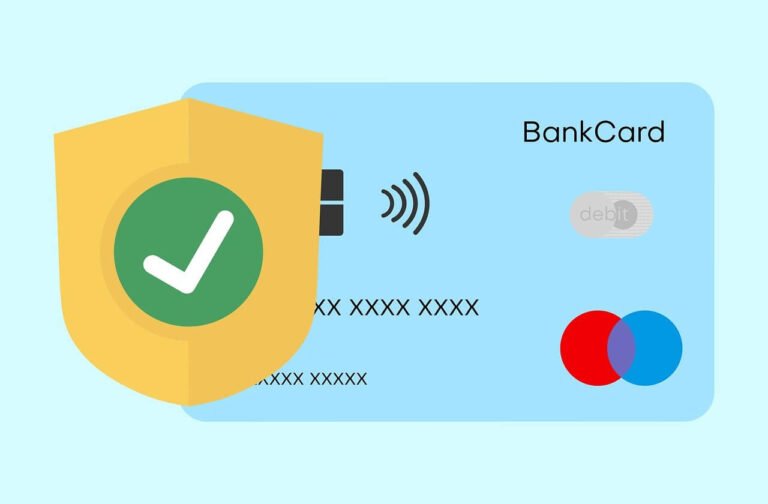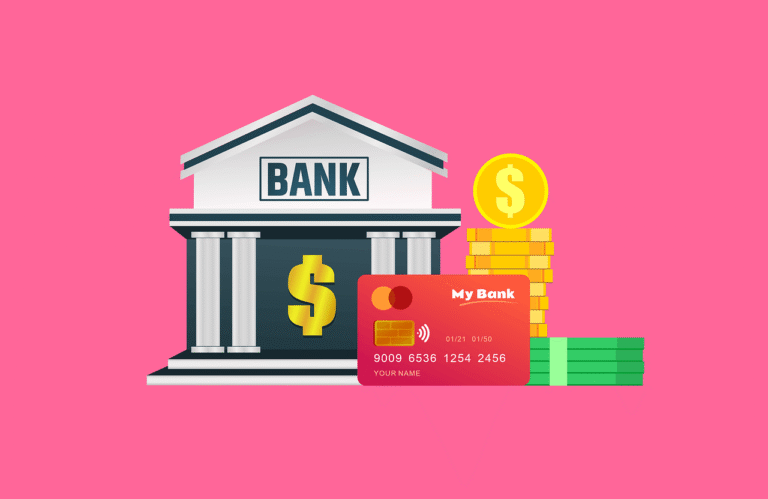High Yield Savings Account vs Traditional Savings Account: Ever looked at your bank statement and noticed the interest earned section shows just pennies?
You’re not alone. Most people don’t realize their savings could be working much harder for them. The type of savings account you pick actually matters more than you might think, especially when you’re trying to build your financial future.
Here’s the truth: not all savings accounts are created equal. Some pay you barely anything while others can boost your savings by hundreds or even thousands of dollars over time. Let’s break down everything you need to know about traditional and high yield savings accounts so you can decide which one fits your needs.
What Is a Traditional Savings Account?
A traditional savings account is the standard option most neighborhood banks offer. You walk into a branch, sit down with a banker, and open an account where your money earns interest. Pretty straightforward, right?
These accounts have been the go-to choice for decades. They’re reliable, familiar, and easy to understand. Most major banks like Chase, Bank of America, and Wells Fargo offer traditional savings accounts. As of 2025, these accounts typically pay around 0.40% to 0.62% in annual percentage yield. That means $1,000 sitting in your account for a year would earn you roughly $4 to $6.
High-Yield Savings Account Calculator
Final Balance
$0.00
Total Deposits
$0.00
Interest Earned
$0.00
What Is a High Yield Savings Account?
A high yield savings account functions similarly to traditional ones, but it pays significantly more interest on your deposits. The main difference? These accounts mostly come from online-only banks that don't maintain expensive physical branches.
Because online banks save money on rent, staff, and building maintenance, they can pass those savings directly to customers through better interest rates. In September 2025, top high yield savings accounts are offering rates between 4% and 5% APY. Put that same $1,000 in one of these accounts and you'd earn $40 to $50 annually—nearly ten times more than traditional accounts.
Side-by-Side Comparison
| Feature | Traditional Savings Account | High Yield Savings Account |
|---|---|---|
| Interest Rate | 0.40% - 0.62% APY | 4.00% - 5.00% APY |
| Annual Interest on $5,000 | $20 - $31 | $200 - $250 |
| Physical Branches | Yes | Usually No |
| Account Access | In-person, online, ATM | Online and mobile app |
| FDIC Insurance | Yes (up to $250,000) | Yes (up to $250,000) |
| Monthly Fees | Often $5-$15 | Usually $0 |
| Minimum Balance | Often required | Usually none |
| Transfer Speed | Immediate at branch | 1-3 business days |
| Customer Service | In-person and phone | Phone, email, chat (often 24/7) |
| Account Opening | In-branch or online | Online only |
Pros of Traditional Savings Accounts
Face-to-Face Banking: Some people prefer talking to a real person when handling their money. Traditional banks let you walk in, ask questions, and get immediate help from staff who know you. This personal connection matters to many savers.
Immediate Access: Need cash right now? With a traditional account at a physical bank, you can withdraw money instantly at a branch or ATM. There's no waiting for transfers to process, which can be helpful in urgent situations.
All Services Under One Roof: When your checking account, savings account, credit card, and maybe even your mortgage are all at the same bank, managing your finances becomes simpler. You can see everything in one place and move money between accounts instantly.
Established Trust: Big banks have been around for generations. Many people feel more secure banking with an institution they've known their whole lives, even if it means earning less interest.
Cons of Traditional Savings Accounts
Very Low Interest Rates: This is the big one. Traditional accounts paying around 0.40% APY barely keep up with inflation. Your money grows so slowly that you're actually losing purchasing power over time.
Monthly Maintenance Fees: Many traditional savings accounts charge $5 to $15 monthly unless you maintain a minimum balance. These fees can eat away at your already-small interest earnings, sometimes leaving you with less money than you started with.
Minimum Balance Requirements: To avoid fees or earn any interest at all, traditional accounts often require you to keep $300, $500, or even more in the account. This can be tough when you're just starting to save.
Limited Growth Potential: With such low rates, building wealth through a traditional savings account takes forever. The compound interest effect is minimal when the base rate is so small.
Pros of High Yield Savings Accounts
Significantly Higher Interest Rates: This is the main reason people switch. Earning 4% to 5% APY means your money grows faster without any extra work on your part. Over time, this difference becomes substantial.
Usually No Monthly Fees: Most online banks don't charge maintenance fees. Your interest earnings actually stay in your account and continue growing instead of getting eaten up by charges.
Low or No Minimum Balance: Many high yield accounts let you start with whatever amount you can afford. Whether you have $10 or $10,000, you'll earn the same competitive rate.
Better Compounding Effect: Higher interest rates mean your interest earns more interest. Over months and years, this snowball effect really adds up and accelerates your savings growth.
24/7 Customer Support: Online banks often provide round-the-clock customer service through multiple channels. You're not limited to branch hours when you need help.
Cons of High Yield Savings Accounts
No Physical Branches: If you like walking into a bank and talking to someone in person, online-only banks won't work for you. Everything happens through your phone or computer.
Delayed Access to Funds: Withdrawing money requires transferring it to your checking account first, which typically takes one to three business days. This isn't ideal if you need cash immediately.
Technology Required: You need to be comfortable using apps and websites to manage your account. People who struggle with technology might find this frustrating.
Variable Interest Rates: While this applies to traditional accounts too, high yield rates can drop when the Federal Reserve lowers interest rates. Your earnings might decrease over time, though they'll still likely beat traditional accounts.
Real Numbers: The Financial Impact
Let's look at actual dollars to see what these rate differences mean for your wallet. Say you're saving $10,000 as an emergency fund and you add $200 every month.
In a traditional savings account at 0.50% APY:
- After 1 year: $12,455
- After 3 years: $17,397
- After 5 years: $22,268
In a high yield savings account at 4.50% APY:
- After 1 year: $12,683
- After 3 years: $18,372
- After 5 years: $23,836
After five years, you'd have $1,568 more in the high yield account. That's extra money you earned just by choosing a better place to save. The longer you save, the bigger this gap becomes.
Read more:
Safety and Security Concerns
Both account types offer equal protection when you bank with FDIC-insured institutions. The Federal Deposit Insurance Corporation backs your deposits up to $250,000 per person, per bank. This applies whether you're banking online or at a physical branch.
Online banks follow the same federal regulations as traditional banks. Your money is equally secure in both types of accounts. The "online only" factor doesn't make them riskier—it just changes how you access your money.
Which Account Fits Your Situation?
Choose a traditional savings account if you:
- Value in-person banking and want to visit a branch
- Need immediate cash access frequently
- Already have multiple accounts at the same bank and want simplicity
- Feel uncomfortable with online-only banking
- Don't mind lower interest rates in exchange for convenience
Choose a high yield savings account if you:
- Want your money to grow faster
- Are comfortable managing finances online
- Can wait 1-3 days for transfers when needed
- Want to avoid monthly fees
- Are building an emergency fund or saving for future goals
- Feel confident using apps and websites
Using Both Types Together
It's not necessary to choose just one. For various reasons, many smart savers employ a hybrid strategy that blends the two account types.
A lesser sum (maybe $500 to $1,000) should be kept in a conventional savings account at your neighborhood bank for easy access. This covers urgent situations or needs for which you cannot wait for a transfer. The bulk of your savings should be placed in a high yield savings account, which will increase more quickly. You can earn more money and have more convenience with this technique.
Making the Switch Is Easy
Worried that moving to a high yield account is complicated? It's actually pretty simple. First, research and pick an online bank with strong reviews and competitive rates. Open your account online—this usually takes 10 to 15 minutes.
Next, link your new high yield account to your existing checking account. Transfer your savings to the new account. Leave your old savings account open for a few weeks to catch any automatic transfers you might have forgotten about. Once you're confident everything has moved over, you can close the old account.
The Final Verdict
For most people, high yield savings accounts come out ahead. The numbers don't lie; earning 4% to 5% beats earning 0.40% to 0.62% every single time. Over the years, this difference can add hundreds or thousands of extra dollars to your savings.
That said, your personal preferences matter. If you truly need in-person banking or can't manage accounts online, a traditional account might serve you better. The best account is one you'll actually use and keep funded.
The bottom line? Don't let your hard-earned money sit in an account earning almost nothing when better options exist. Whether you choose traditional convenience or high yield growth, the important thing is that you're saving consistently. But if you can make the jump to a high yield account, your future self will thank you when you see how much faster your savings pile up.
Take a few minutes today to compare your current savings account with what's available. Small changes in where you save can lead to big differences in how much you save. Your money deserves to work as hard as you do.



